Preparing for a Discus Competition
The discus is sometimes referred to as the Pompadour Fish, and for good reason! This little fish is eye catching and a great addition to your tank, earning its spot as one of the most popular fresh water aquarium fish in the world. A show-quality discus is usually described as a fish who has bright eyes, whose colors pop and are bright and pleasing, whose energy is playful, and who isn’t afraid of being photographed or interrupted in its daily movements.
Gold Panda Discus
Taking care of your discus to prepare it for a show is largely the same process of taking care of any discus to bring it to its maximum health. It’s mostly an easy process. With a little patience and the instructions below, you will discover that your discus is not only a great pet, but perhaps a show winner, too!
FEEDING YOUR DISCUS
Discus love the taste of live food and can be very enthusiastic about catching their meal. Their basic diet should consist of at least one of the following, or a mixture of no more than two: brine shrimp (if the discus is under one half of a year old), tubifex worm, bloodworm, or dry food in pellet or flake form. At most you should be feeding each discus about one to two live pieces of food twice a day; once in the morning and once in the evening is recommended. For dry pellets or dry flakes, a teaspoon twice a day is recommended.
In certain situations, if a discus is fed only live bait and then quickly transitioned to dry food, it may not eat. Mix in the live bait with about a quarter to a half a teaspoon of dry food until the fish becomes accustomed to the new food.
Even after you drop in a few bits of these tasty treats, sometimes your discus still won’t eat. If your fish are ignoring their food or not nibbling, it is recommended that you change their water right away and withhold food for at least two days. The discus fish can go more than a week without food, and while it may seem cruel, this can help reenergize its hunger and actually teach the fish to enjoy feeding time. The discus survive on very little food in the wild, especially in their native home of the Amazon River basin, and they will adapt slowly to their new overabundance of food in your home.
Discus come in many different colors and what you feed them can actually impact their shading and even change their colors completely. The coloring of a food or spice, such as Paprika can turn a yellow discus into an orange one! For an example, see our red leopard snakeskin below. Also, foods containing beta-carotene can brighten a discus’ red color. Just look at our red panda discus in the second photo!
Red Leopard Snakeskin
Red Panda Discus
It is important to note that, while interesting and certainly eye catching, constantly changing the color of discus can potentially harm them and shorten their lifespan. Please ensure that if you do intend to change the color of your fish, that you do so sparingly.
LIFESTYLES OF THE DISCUS AND FAMOUS!
Depending on the amount and size of the discus fish you would like to own use a tank that is proportional in size.
A tank that is 30 inches by 12 inches by 18 inches (29 gallons) can support about 18 to 50 smaller sized discus (about two inches). For larger four or five-inch discus it is recommended that you only have between two and eight in a tank that size. Upgrading your tank is always a safe way to ensure you can have as many discus as you want while still making them comfortable.
Because the discus is a fresh water fish, it is dangerous to put salt water, or any other type of water, into their tank. Fresh water should be changed, at a minimum, every 10 days to ensure that the pH balance and any uneaten food do not pollute the water. The pH should generally be between 6.8 and 7 in order to maintain healthy discus.
Water conditioners can ensure that the pH approaches a cleaner, more habitable environment for the discus. While they can adjust their bodies to a pH level that is slightly above the norm, any exposure to higher levels can harm them and even kill them. Be sure to purchase pH test strips to ensure that you keep the level low and healthy.
A standard filter pump or reverse osmosis tube can help keep the water clean until the next changing. The filter can even relieve some of the pressure of the changing pH levels and make it easier to change the water in the future.
Get creative decorating your tank! Putting in rocks, toys, or a little piece of driftwood can lift the spirits of your discus, making them more playful. Tropical plants such as Amazon sword plants are a great addition to your tank, as the fish will not eat the plants and may even lay eggs on their leaves, as they do in the Amazon!
Discus with Amazon Sword Plant
Natural daylight is always the best source of light for your discus. It helps impact water freshness as well as improve any tropical plant life inside the tank.
Fluorescent lights and a pleasing, bright environment are key to keeping the fish active and also can impact their colors. Different shades of fluorescent light are absorbed into the fish’s skin, impacting the pigment. Leave the lights on only during the night, and for a maximum of about 10 hours. Too much light can cause the fish and any plants in your tank to become weak.
I’M READY FOR MY CLOSE UP!
Preparing a discus for a show is largely the same process of keeping any discus fish own healthy. Keeping it properly fed and in a well-balanced tank can go a long way to make your discus ready for its shining moment.
The size of a regular show tank is about 16 gallons. This is because only one fish will be on display at a time. Make sure that if you are conditioning your fish to be show-worthy, that you put it into a smaller tank by itself several weeks before the show. This process will make it comfortable to be by itself and will build up its confidence to be lively on the big day.
When your fish is living by itself, be sure to make noise and splash around the top of tank when feeding it. This method will prepare the fish for the commotion of show day when hundreds, or perhaps thousands, of visitors will be walking by and taking photos and prodding at the tank. If not prepared, the discus may become frightened and retreat to a more reserved state.
Keeping your discus well fed will ensure its color vibrancy, and having decorations and items in your tank can inspire the discus to be much more active and eye-catching. If the color of your discus is starting to wane closer to an upcoming show, switch its food to a smaller, more lively bait. The enzymes and properties of a new form of food can kickstart the reactions inside the fish, causing their colors to become much healthier. Just like with humans, too much of the same food can grow old and stale on a discus. New types of food can excite them and prepare them for action!
Three days before the show, withhold food from your fish in order to keep the tank free of any pollution (remember, a discus can survive for about seven days without food). During the show, the fish will not be fed, so make sure to feed it as soon as the competition is over.
Preparing a discus for a show can be a very easy process. Simply keeping your fish happy and healthy could mean that you are coming home with a blue ribbon!
QUESTIONS
- How is preparing a discus for a show similar to simply keeping a healthy discus?
- How is preparing a discus for a show more than merely keeping a healthy discus?
- What are your goals with preparing your discus for a competition?
- What species of discus would you like to use to compete in a discus competition?
- Would you enjoy preparing your discus to compete in a discus competition?

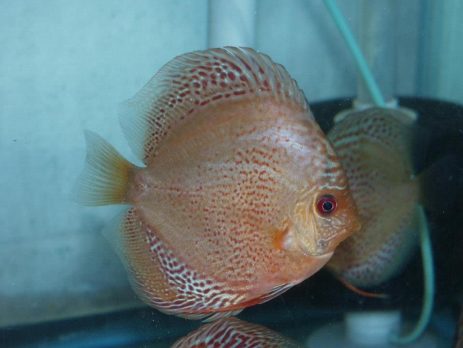
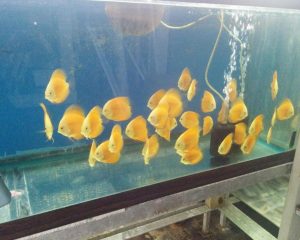

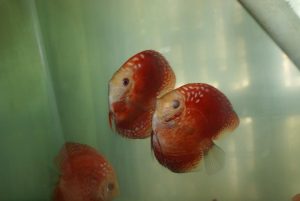


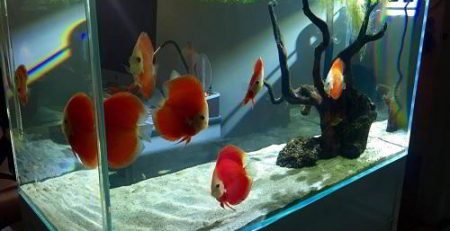
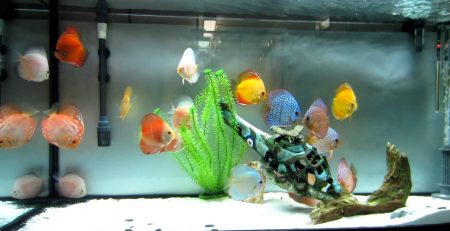
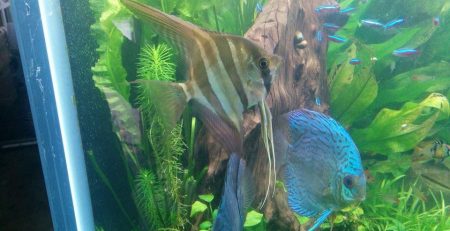

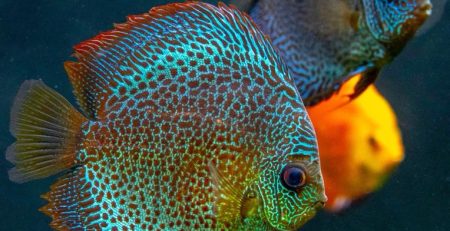
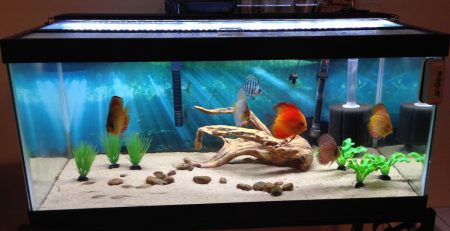

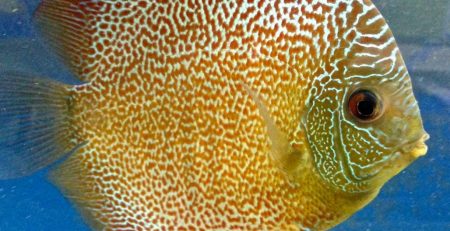
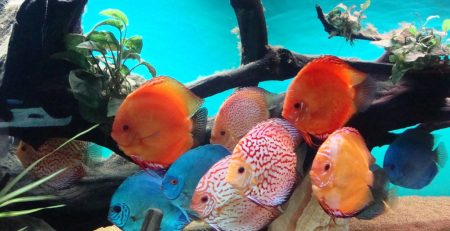
Leave a Reply
You must be logged in to post a comment.